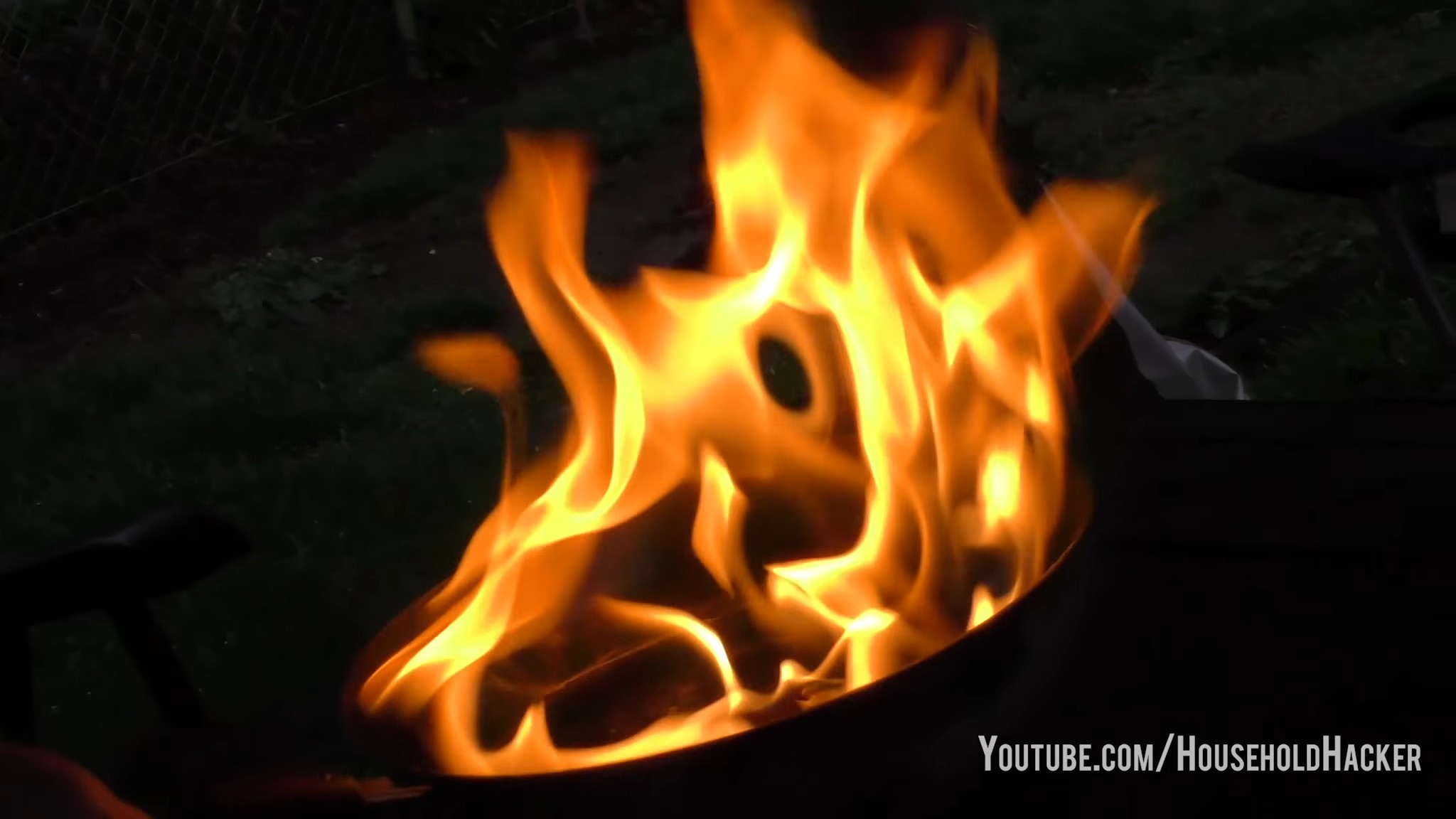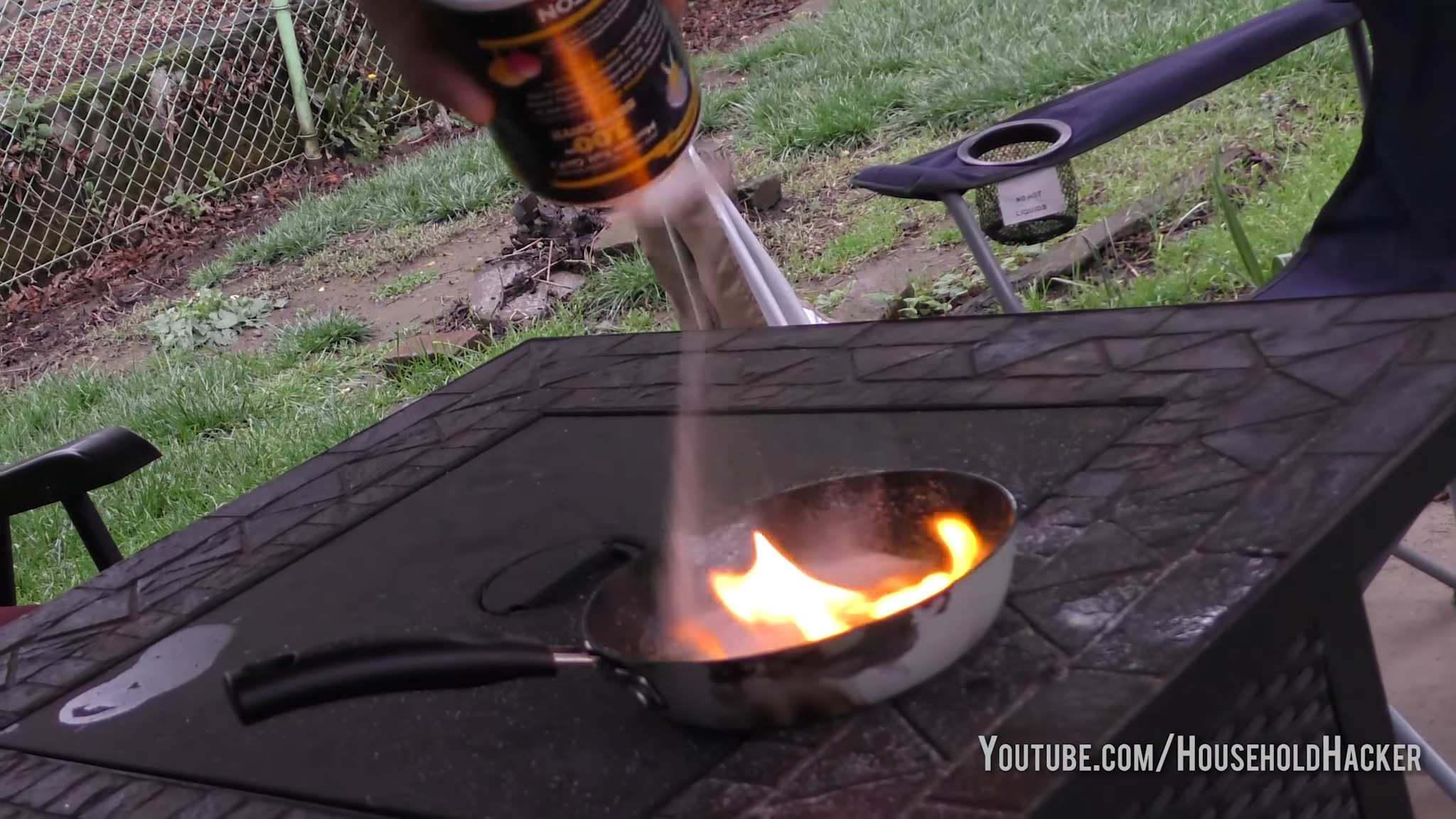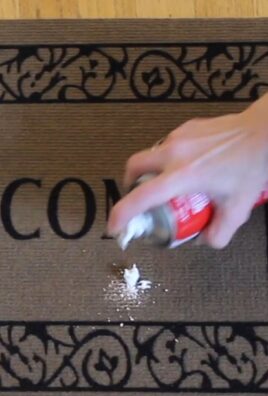Salt Uses for Home Gardening: Unlock the Secret to a Thriving Garden!
Have you ever looked at your garden and wished you had a magic wand to make your plants flourish? Well, while I can’t offer you a wand, I can offer you something almost as magical: common table salt! For centuries, salt has been more than just a kitchen staple. In ancient times, it was so valuable it was used as currency! But did you know that salt uses for home gardening extend far beyond the dinner table?
I know what you’re thinking: “Salt? In my garden? Isn’t that bad?” And you’re right to be cautious! Too much salt can harm your plants. But when used correctly, salt can be a surprisingly effective and eco-friendly tool. From boosting your soil’s nutrient content to tackling pesky weeds and even deterring slugs, the possibilities are truly amazing.
In this article, I’m going to share some incredible DIY tricks and hacks that will transform the way you think about salt uses for home gardening. I’ll guide you through safe and effective methods, ensuring you get the benefits without harming your precious plants. Get ready to discover how this simple ingredient can help you achieve the lush, vibrant garden you’ve always dreamed of!

Unlocking the Magic of Salt: Beyond the Kitchen Shaker
Hey there, fellow DIY enthusiasts! I’m so excited to share some amazing ways you can use ordinary table salt around your home. Forget just seasoning your food; salt is a powerhouse for cleaning, deodorizing, and even crafting! Get ready to be amazed by these simple yet effective salt hacks.
Cleaning Powerhouse: Salt to the Rescue!
Salt’s abrasive texture and chemical properties make it a fantastic natural cleaner. It’s gentle enough for many surfaces but tough enough to tackle grime and stains.
Cleaning a Scorched Iron
Is your iron looking a little worse for wear with those burnt marks? Don’t worry, salt can help!
1. Gather your supplies: You’ll need a clean cotton cloth, some table salt, and your iron.
2. Prepare the surface: Lay the cotton cloth flat on your ironing board.
3. Sprinkle the salt: Generously sprinkle a layer of salt onto the cloth.
4. Iron away the grime: Turn your iron on to a dry, medium setting (no steam!). Carefully run the iron over the salt-covered cloth, using gentle pressure. Keep moving the iron to avoid overheating any one spot.
5. Wipe clean: Once you’ve ironed for a few minutes, unplug the iron and let it cool completely. Use a clean, damp cloth to wipe away any remaining salt residue from the iron’s soleplate. Voila! A sparkling clean iron.
Reviving Tarnished Copper and Brass
Bring back the shine to your copper pots and brass ornaments with this simple salt paste.
1. Mix the cleaning paste: In a small bowl, combine equal parts salt, white vinegar, and flour. Mix until you form a smooth paste.
2. Apply the paste: Using a soft cloth, apply the paste to the tarnished copper or brass item.
3. Let it sit: Allow the paste to sit for about 15-30 minutes, depending on the severity of the tarnish.
4. Scrub gently: Using a clean, damp cloth, gently scrub the item to remove the tarnish.
5. Rinse and dry: Rinse the item thoroughly with warm water and dry it with a clean, soft cloth. Your copper and brass will look brand new!
Cleaning a Greasy Skillet
Say goodbye to stubborn grease with this easy salt scrub.
1. Sprinkle generously: While the skillet is still warm (but not hot!), sprinkle a generous amount of salt into the pan.
2. Scrub it down: Use a dry paper towel or a stiff brush to scrub the salt around the pan, focusing on the greasy areas. The salt will act as an abrasive, lifting the grease.
3. Rinse and wash: Rinse the skillet with warm water and wash it as usual with soap and water. You’ll be amazed at how easily the grease comes off!
Freshening Sponges and Dishcloths
Extend the life of your sponges and dishcloths and keep them smelling fresh with a salt soak.
1. Prepare the salt solution: Fill a bowl or sink with cold water. Add 1/4 cup of salt and stir until dissolved.
2. Soak the sponges and cloths: Submerge your sponges and dishcloths in the salt solution.
3. Let them soak: Allow them to soak for several hours, or even overnight.
4. Rinse and dry: Rinse the sponges and cloths thoroughly with clean water and allow them to air dry. This will help kill bacteria and remove odors.
Deodorizing Wonders: Salt as a Natural Freshener
Salt isn’t just for cleaning; it’s also a fantastic natural deodorizer. It absorbs odors and helps keep your home smelling fresh.
Freshening a Musty Carpet
Banish those musty carpet odors with a simple salt treatment.
1. Sprinkle the salt: Generously sprinkle a layer of salt over the entire carpet.
2. Let it sit: Allow the salt to sit on the carpet for at least a few hours, or even overnight for stubborn odors.
3. Vacuum thoroughly: Vacuum the carpet thoroughly to remove all the salt. The salt will have absorbed the odors, leaving your carpet smelling fresh.
Deodorizing Shoes
Say goodbye to smelly shoes with this easy salt trick.
1. Fill a sock: Fill a clean sock with about 1/2 cup of salt.
2. Tie it off: Tie the sock closed to create a small salt pouch.
3. Place in shoes: Place the salt pouch inside each shoe and leave them overnight. The salt will absorb the moisture and odors, leaving your shoes smelling much better.
Cleaning and Deodorizing the Garbage Disposal
Keep your garbage disposal clean and fresh with this simple salt and ice trick.
1. Pour in the salt: Pour about 1/2 cup of salt down the garbage disposal.
2. Add ice cubes: Add a handful of ice cubes.
3. Run the disposal: Turn on the cold water and run the garbage disposal for about 30 seconds. The ice and salt will help scrub the disposal blades and remove any built-up food particles and odors.
Crafting with Salt: Unleash Your Creativity
Salt isn’t just for practical uses; it can also be used for fun and creative crafts!
Making Salt Dough Ornaments
Create beautiful and personalized ornaments with this classic salt dough recipe.
1. Gather your ingredients: You’ll need 1 cup of salt, 2 cups of all-purpose flour, and 1 cup of water.
2. Mix the dough: In a large bowl, combine the salt and flour. Gradually add the water, mixing until a dough forms.
3. Knead the dough: Knead the dough on a lightly floured surface for about 5-10 minutes, until it’s smooth and elastic.
4. Roll out the dough: Roll out the dough to about 1/4 inch thickness.
5. Cut out shapes: Use cookie cutters to cut out your desired shapes.
6. Create a hole for hanging: Use a straw or skewer to create a small hole at the top of each ornament for hanging.
7. Bake the ornaments: Place the ornaments on a baking sheet lined with parchment paper. Bake in a preheated oven at 250°F (120°C) for 2-3 hours, or until the ornaments are hard and dry.
8. Decorate the ornaments: Once the ornaments are cool, you can decorate them with paint, glitter, markers, or anything else you like!
Creating Salt Art
Make stunning and unique artwork with colored salt.
1. Gather your supplies: You’ll need salt, food coloring, resealable plastic bags, paper, glue, and a container to hold your artwork (like a jar or bottle).
2. Color the salt: Divide the salt into several resealable plastic bags. Add a few drops of food coloring to each bag and seal it tightly. Shake the bag until the salt is evenly colored. You can create a variety of colors.
3. Dry the salt: Spread the colored salt on a baking sheet lined with parchment paper and let it dry completely.
4. Create your design: Apply glue to the paper in the areas where you want to add the colored salt.
5. Sprinkle the salt: Sprinkle the colored salt onto the glue, covering the glued areas completely.
6. Shake off excess salt: Gently shake off any excess salt.
7. Repeat: Repeat steps 4-6 with different colors of salt to create your desired design.
8. Display your artwork: Once the glue is dry, you can display your salt art in a frame or container. For layered salt art in a jar, simply layer different colors of salt to create a visually appealing design.
Making Salt Crystals
Grow your own beautiful salt crystals with this fun science experiment.
1. Gather your supplies: You’ll need salt, water, a glass jar, a spoon, and a string or pipe cleaner.
2. Create a saturated salt solution: Heat water in a saucepan until it’s almost boiling. Gradually add salt to the water, stirring until it dissolves. Continue adding salt until no more will dissolve. This is a saturated solution.
3. Pour the solution into the jar: Carefully pour the hot salt solution into the glass jar.
4. Suspend the string or pipe cleaner: Tie the string or pipe cleaner to a pencil or stick and suspend it in the jar, making sure it doesn’t touch the bottom or sides.
5. Wait for the crystals to grow: Place the jar in a cool, undisturbed location and wait for the crystals to grow. This can

Conclusion
So, there you have it! Unlocking the power of salt goes far beyond just seasoning your food. We’ve explored a range of incredible DIY tricks that showcase the versatility of this humble ingredient. From banishing stubborn stains to revitalizing your cleaning routine and even enhancing your garden, salt proves to be an indispensable ally in maintaining a happy and healthy home.
Why is this a must-try? Because these salt-based solutions are not only incredibly effective, but they are also budget-friendly and environmentally conscious. Ditch the harsh chemicals and embrace a natural approach to home care. You’ll be amazed at how well these simple remedies work, often outperforming their expensive, store-bought counterparts. Plus, you likely already have a container of salt sitting in your pantry, making these DIY projects instantly accessible.
Looking for variations? Consider infusing your salt solutions with essential oils for added fragrance and therapeutic benefits. A few drops of lavender oil in your cleaning solution can create a calming atmosphere, while lemon oil can boost its degreasing power. For garden applications, experiment with different types of salt, such as Epsom salt, which is rich in magnesium and can promote lush plant growth. You can also adjust the concentration of salt depending on the specific task at hand. For delicate surfaces, start with a diluted solution and gradually increase the concentration as needed.
We’ve covered a lot of ground, from unclogging drains with a salt and baking soda mixture to creating a natural weed killer for your garden paths. Remember the key is experimentation and finding what works best for your specific needs and environment. Don’t be afraid to tweak the recipes and adapt them to your unique situation.
Ultimately, the goal is to simplify your life and create a more sustainable home. By incorporating these salt uses into your routine, you’ll not only save money and reduce your reliance on harsh chemicals, but you’ll also gain a deeper appreciation for the power of natural ingredients.
Now it’s your turn! We wholeheartedly encourage you to try these DIY tricks and discover the magic of salt for yourself. We are confident that you will be impressed with the results. Don’t just take our word for it – experience the difference firsthand.
And most importantly, we want to hear from you! Share your experiences, tips, and variations in the comments below. Let us know which tricks worked best for you, and if you discovered any new and innovative uses for salt. Together, we can unlock even more of its potential and create a community of resourceful and eco-conscious homeowners. Let’s start a conversation and spread the word about the amazing benefits of using salt uses for home!
Frequently Asked Questions (FAQs)
What kind of salt should I use for these DIY tricks?
Generally, common table salt (sodium chloride) works well for most of the applications mentioned. However, for certain tasks, other types of salt may be more suitable. For example, Epsom salt (magnesium sulfate) is excellent for gardening due to its magnesium content, which promotes plant growth. Coarse salt, like kosher salt or sea salt, can be more effective for scrubbing and cleaning due to its abrasive texture. Always consider the specific application and choose the appropriate type of salt accordingly. Avoid using iodized salt on certain surfaces, as it may cause staining.
Is salt safe to use around pets and children?
While salt is generally considered safe, it’s important to exercise caution when using it around pets and children. Keep salt solutions out of reach of children to prevent accidental ingestion. When using salt in the garden, ensure that pets do not ingest large quantities, as it can cause dehydration or electrolyte imbalances. If you have concerns about your pet’s sensitivity to salt, consult with your veterinarian before using salt-based solutions in areas where they frequent. Always supervise children when they are involved in DIY projects using salt.
Can salt damage certain surfaces?
Yes, salt can potentially damage certain surfaces if used improperly. Avoid using abrasive salt on delicate surfaces like polished wood, painted walls, or certain types of fabrics, as it can cause scratches or discoloration. Always test a small, inconspicuous area before applying salt to a larger surface. When cleaning with salt, use a diluted solution and avoid excessive scrubbing. For metal surfaces, be mindful of potential corrosion and rinse thoroughly after cleaning with salt.
How do I store salt solutions?
Store salt solutions in airtight containers in a cool, dry place away from direct sunlight. Label the containers clearly to avoid confusion. For solutions containing perishable ingredients like lemon juice, store them in the refrigerator to prevent spoilage. Discard any solutions that show signs of contamination or discoloration.
Can I use salt to get rid of ants?
Yes, salt can be an effective natural ant repellent. Sprinkle salt directly on ant trails or around entry points to deter them. You can also create a salt solution by mixing equal parts salt and hot water and spraying it on ant-infested areas. However, keep in mind that salt may not be a permanent solution, and you may need to reapply it regularly. For severe infestations, consider using other pest control methods.
How often should I use salt to clean my drains?
You can use a salt and baking soda mixture to clean your drains every few weeks to prevent clogs and maintain proper drainage. Pour about 1/2 cup of salt followed by 1/2 cup of baking soda down the drain, then add a cup of boiling water. Let it sit for 30 minutes, then flush with hot water. Avoid using this method too frequently, as excessive use of salt can potentially corrode pipes over time.
What are some other creative uses for salt around the house?
Beyond the uses mentioned in the article, salt can also be used to:
* Remove water rings from wooden furniture: Mix salt with a little water to form a paste, gently rub it on the water ring, and then wipe clean.
* Clean cast iron cookware: Use coarse salt and a dry cloth to scrub away food residue from cast iron pans.
* Deodorize cutting boards: Sprinkle salt on the cutting board, rub it with half a lemon, and then rinse with water.
* Keep cut flowers fresh: Add a pinch of salt to the water in the vase to help prolong the life of cut flowers.
* Remove mildew from shower curtains: Soak the shower curtain in a salt water solution to kill mildew and prevent its growth.
Is there any harm in using too much salt in my garden?
Yes, excessive use of salt in the garden can be harmful to plants and soil. High concentrations of salt can dehydrate plants, inhibit nutrient uptake, and damage soil structure. Use salt sparingly and only in areas where you want to control weeds or prevent plant growth, such as pathways or driveways. Avoid using salt near desirable plants or in areas where you plan to grow plants in the future.
Can I use salt to remove rust?
Yes, salt can be used to remove rust from metal surfaces. Mix salt with lemon juice or vinegar to create a paste, apply it to the rusted area, and let it sit for a few hours. Then, scrub the area with a brush or steel wool and rinse with water. Repeat the process if necessary. For stubborn rust, you may need to use a stronger rust remover.
Where can I find more information about salt uses for home?
You can find more information about salt uses for home on various websites, blogs, and online forums dedicated to DIY projects, home cleaning, and gardening. Look for articles and videos that provide detailed instructions and tips on using salt for specific purposes. You can also consult with experts in these fields for personalized advice. Remember to always research and verify information from multiple sources before trying any new DIY trick.



Leave a Comment